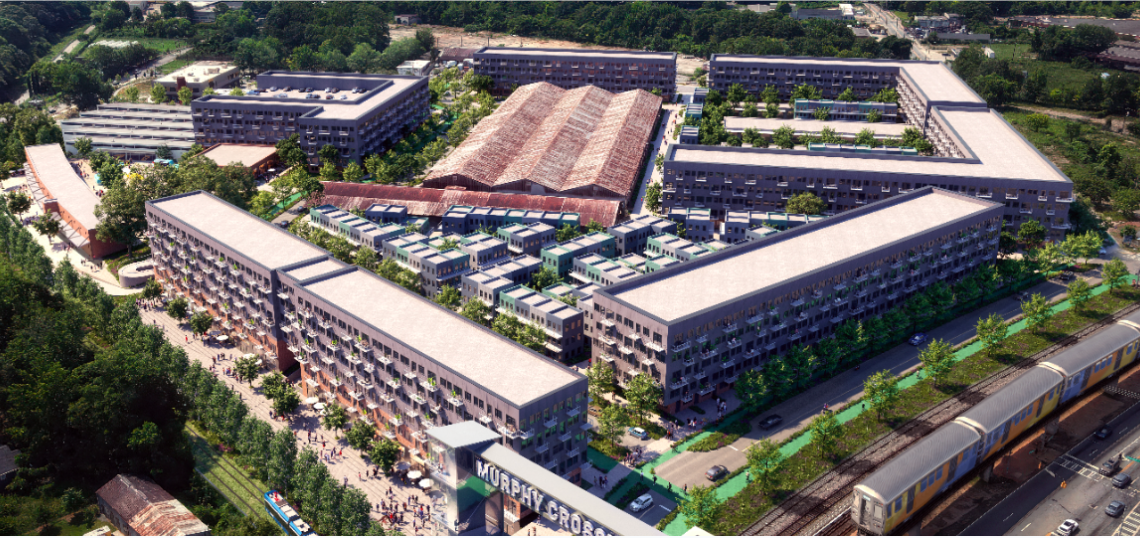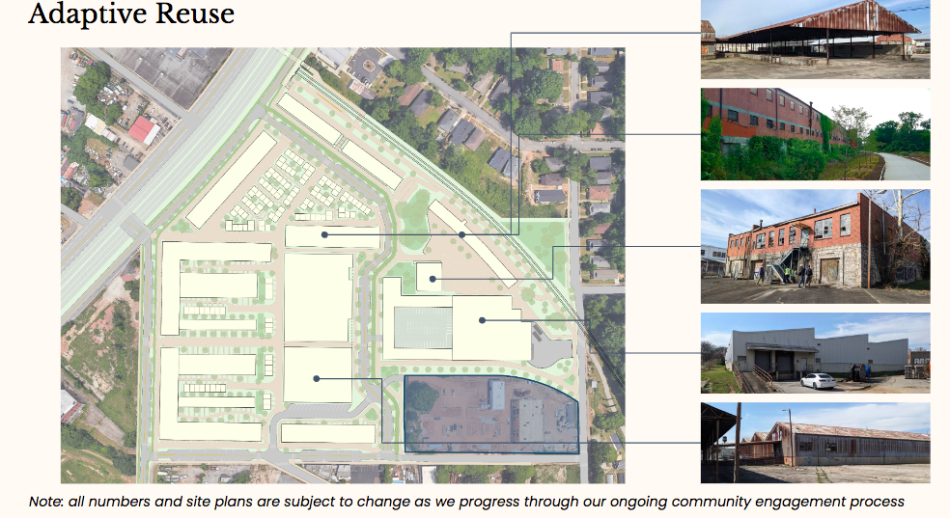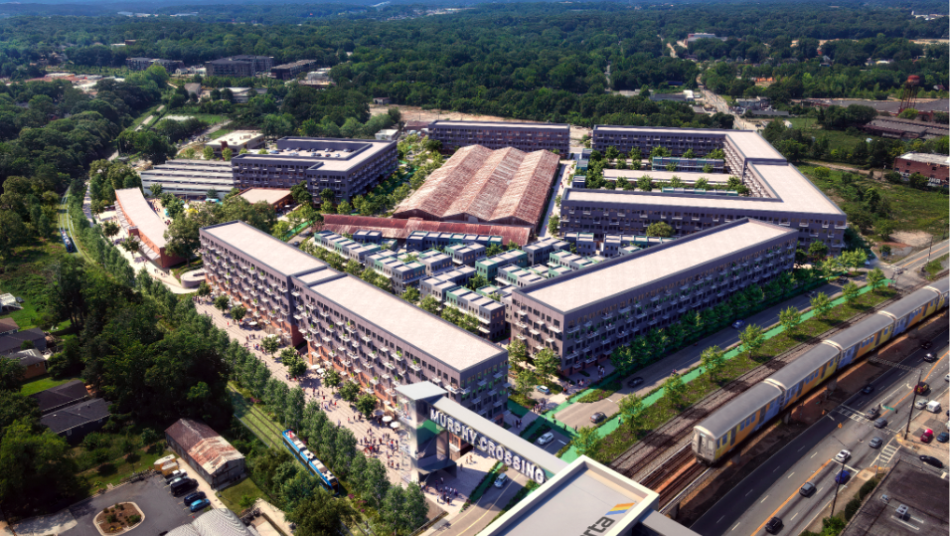The vision for a Southwest Atlanta project expected to turn a vacant, historic industrial site into an oasis of “attainable Beltline living” and a new commercial district is coming into clearer focus with fresh visuals and a tentative development timeline.
Earlier this year, the board of directors for both the Atlanta Beltline and Invest Atlanta voted to select Arizona-based Culdesac and Urban Oasis Development as developers for the vacant Murphy Crossing property along the Westside Trail in Oakland City, ending a nearly three-year search.
Since then, behind-the-scenes pre-construction work has been ongoing, and the community engagement process has begun.
Renderings revealed during a community meeting with the development team and Beltline officials last month were recently brought to Urbanize Atlanta’s attention. They appear to show a denser vision for Murphy Crossing with an emphasis on connectivity to the Beltline and MARTA rail.
Atlanta Beltline Inc. officials stressed this week the development plans are tentative and will continue to evolve throughout the entitlement and design process. Culdesac is leading the entitlement and community engagement work for Murphy Crossing, working closely with the Beltline.
Beltline reps directed all inquiries regarding Murphy Crossing’s planning documents to Culdesac. An inquiry to Culdesac this week wasn't returned.
But this much is clear: Tentative plans at Murphy Crossing call for a whopper of new development, potentially spread across six phases of construction. The commercial component alone could be 20,000 square feet larger than all restaurant, retail, and entertainment space at Midtown’s redeveloped Colony Square combined.
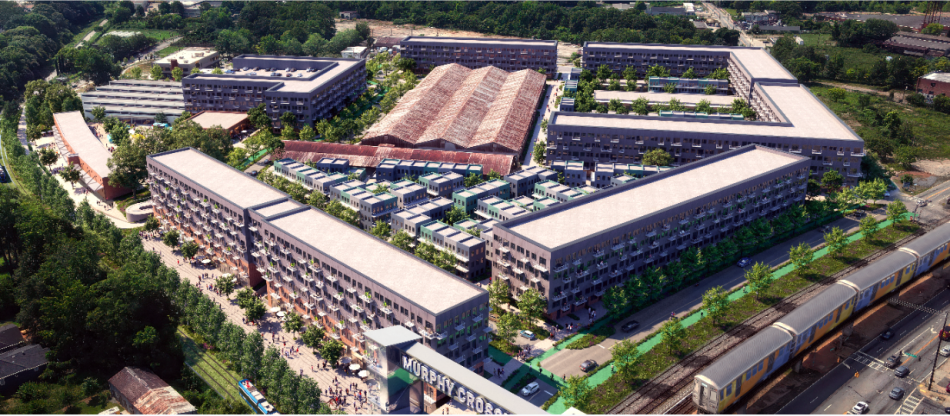 The most detailed image compiled during the Culdesac period for Murphy Crossing's potential scope and connectivity to the Beltline and MARTA. Culdesac; Urban Oasis Development; Atlanta Beltline Inc.
The most detailed image compiled during the Culdesac period for Murphy Crossing's potential scope and connectivity to the Beltline and MARTA. Culdesac; Urban Oasis Development; Atlanta Beltline Inc.
 Early vision for a potential MARTA infill station adjacent to the new Oakland City community. Culdesac
Early vision for a potential MARTA infill station adjacent to the new Oakland City community. Culdesac
The site could see more than 1,100 residential units and more than 180,000 square feet of commercial space built under I-Mix zoning, which is pending city approval. That classification allows for dense economic development—combining commercial, residential, and even jobs-producing industrial uses on a single property—in underserved neighborhoods around the city. (Selig’s The Works district was among the first projects in town to receive the classification.)
Situated where Oakland City meets Adair Park and Capitol View, the 20-acre site once operated as the Georgia Farmers Market and currently includes about a dozen warehouses and other buildings.
According to a presentation timeline, zoning reviews and community design meetings are scheduled to continue through October. The development team expects to work with engineers to submit the project to the State of Georgia as a Development of Regional Impact in December, given its large scale.
Permitting and design work would continue through most of 2025, and the project could break ground as early as September next year, according to the presentation.
Culdesac won the BeltLine’s favor for its innovative approach to building walkable districts less reliant on vehicles than typical developments. The company gained national recognition for its 17-acre Arizona project, Culdesac Tempe, that opened in 2022 with about 750 residential units, 30,000 square feet of retail and amenities, and a network of bike lanes and walking paths.
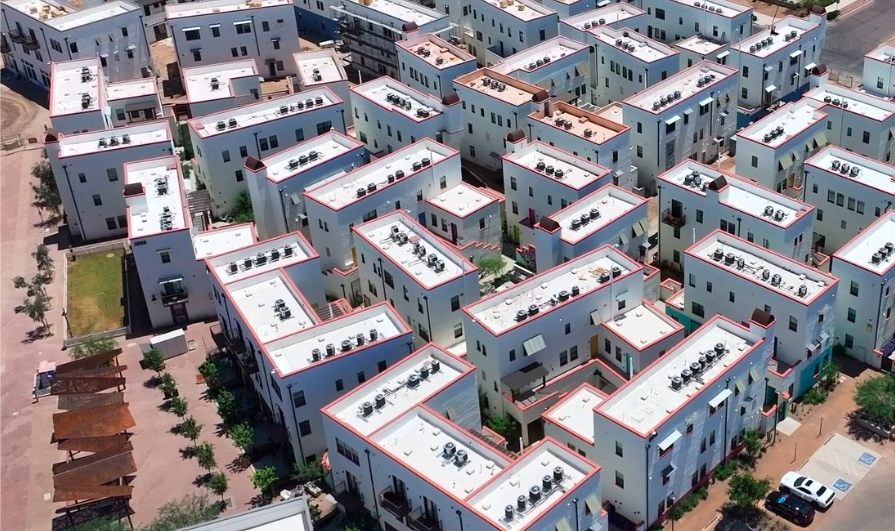 Arizona's Culdesac Tempe opened in winter 2022 with a much smaller scale—but similar architecture, in some regards—than Murphy Crossing plans.
Culdesac
Arizona's Culdesac Tempe opened in winter 2022 with a much smaller scale—but similar architecture, in some regards—than Murphy Crossing plans.
Culdesac
Joel Dixon, an Urban Oasis Development principal, predicted earlier this year Murphy Crossing will evolve into a blueprint for economic inclusion, job creation, and affordable housing and commercial spaces near two MARTA stations (West End and Oakland City).
One of four new MARTA infill stations proposed across the city could also be placed at Murphy Crossing’s doorstep, just to the north. Culdesac’s site plan stresses that a future MARTA connection should remain top-of-mind as designs are finalized.
According to Beltline officials, the public-private partnership requires that 30 percent of the rental component is reserved for tenants earning between 60 and 80 percent of the area median income for at least 30 years.
Any for-sale affordable housing at Murphy Crossing must be accessible for individuals and households earning up to 120 percent AMI, per Beltline leadership.
On the commercial side, plans call for 20 percent of space to be made available at a 20 percent discount under market rate. For the first affordable tenants, small business grants of up to $25,000 each could be made available as well, according to the July presentation.
Other aspects of the Murphy Crossing remake call for pathways, bike lanes, plazas, courtyards, a dog park, and a community garden. High-speed Wi-fi throughout the property, rotating public art exhibits, and interpretive signage made by local artists are also in the works.
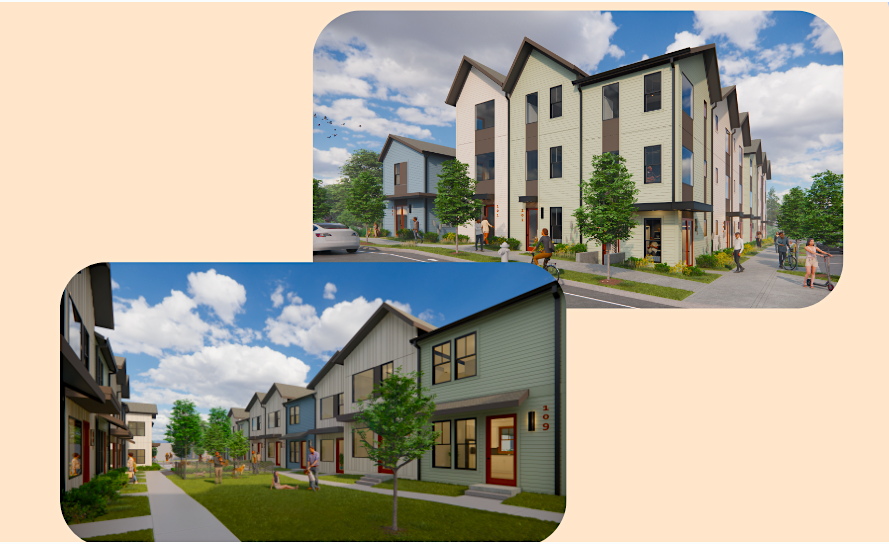 Potential look of Murphy Crossing housing included as examples in a recent community presentation. Culdesac
Potential look of Murphy Crossing housing included as examples in a recent community presentation. Culdesac
Beltline officials have said an advisory committee with stakeholders from nearby neighborhood planning units and other groups has been put in place, in addition to a business advisory committee comprised of locals that aims to ensure small and minority businesses are included in Murphy Crossing investment.
Below, find a before/after comparison of what Murphy Crossing could become. And head up to the gallery for more context and fresh visuals.
...
Follow us on social media:
Twitter / Facebook/and now: Instagram
• Oakland City news, discussion (Urbanize Atlanta)





